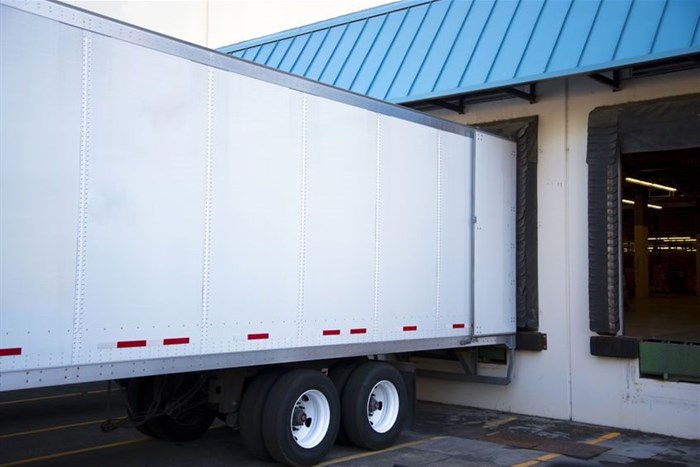There is no doubt that the transportation and logistics around perishables and certain pharmaceutical goods such as vaccinations require an effective and unbroken cold chain. Any instance where the temperature of goods falls outside the required range, whether in transit or storage or at the final point of sale, could render the products unusable. This not only negatively impacts profitability, but it also can impact reputation and creates unnecessary wastage.
Smart connected and automated temperature monitoring at every point of the cold chain will help logistics companies proactively ensure their cold chain is never broken and their goods arrive in prime condition for use and sale.
A complex chain with many links
Transporting perishable goods such as food, as well as pharmaceutical products that need to be maintained at a specific temperature, is a complex process. The cold chain has many links: various storage facilities, and different transport environments between the manufacturer and the final point of sale. This includes the initial warehouse, long haul transport which may be via truck, rail or air, and regional or last-mile transporters, as well as storage locations in between.
In order to ensure foods and medications are not spoiled, the temperature of the products needs to remain constant within the required tolerance limits. This, in turn, varies depending on the product being transported – for example, fresh fruit may need to remain under 10 degrees Celsius, but specific vaccinations may need to be maintained at below freezing.
This chain is only as strong as its weakest link. If at any point in the logistics process, the temperature falls outside of the recommended range, then the food may spoil. However, in the case of pharmaceuticals, it could have a severe adverse reaction if the cold chain is broken and the medication is administered to a patient.
Waste not, want not
In terms of perishables like food, poorly handled produce has a direct impact on the bottom line of manufacturers and logistics companies. Spoiled food creates an inferior customer experience, because nobody wants to buy food that tastes, looks or smells bad, or that does not have a good shelf life. But even more important to remember is that spoilt medication could endanger lives.
In addition, wastage creates economic strain, since goods must be procured repeatedly and cannot be resold. This also often leads to goods being sourced from overseas, if locally sourced and manufactured products consistently fail to be delivered in a saleable condition.
Logistics companies may lose contracts if they consistently fail to deliver, and cold chain transportation is a significant investment that needs to be profitable. This includes the ability to effectively allocate goods to refrigerated vehicles, as well as maintaining the cooling equipment and cooling plants. The logistics process needs to be optimised to ensure the chain remains unbroken and maximum profits can be derived.
Connected technology is the answer
The integrity of the cold chain needs to be ensured, but more than that, logistics providers need to be able to monitor temperatures continuously. They also need the ability to prove that their chain has not been broken, and proactively remedy any instances where temperatures are falling outside of the limits. This is where smart, connected temperature sensor and monitoring equipment can be enormously beneficial.
Leveraging the growing backbone of the Internet of Things (IoT), devices can be connected via GSM or Wi-Fi to provide continuous, real-time temperature monitoring across all areas of storage and transportation. These devices take readings at regular intervals and automatically compare them to the set threshold. If the threshold is breached, alerts are sent to relevant parties for remedy. This helps to identify issues with faulty equipment or power supply, for example, and ensures that they can be rectified proactively to protect stock before issues can harm the cold chain.
Data is key to unlocking value
An integrated and connected system across the cold chain can unlock tremendous value. All communications are uploaded to a cloud-based system that can be accessed from anywhere, which empowers logistics providers to proactively minimise both downtime and stock wastage. Data analysis also enables organisations to identify trends and patterns to remedy any latent problems within the cold chain.
In addition, real-time connected data logging provides an auditable record of temperature compliance that can be graphed and visualised and provided to inspection authorities. Data analytics also provides insights that can help to fine-tune operational and handling processes. Remote device management and location mapping and analysis also help logistics providers to understand exactly where and when problems occur. This can be used not only to address equipment failures but also human behaviours that may be compromising the cold chain.
When it comes to ensuring cold chain integrity, the reliability of the equipment is key. It needs to be rugged, robust and fit for purpose, and offer 100% uptime with battery backup and dual network connectivity. Solutions should also conform to global standards and provide unrestricted, real-time access to data from anywhere at any time. With connected, automated monitoring solutions that incorporate data analytics, logistics providers can develop a proactive, auditable approach to ensuring their cold chain remains unbroken.


































